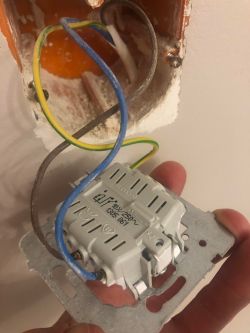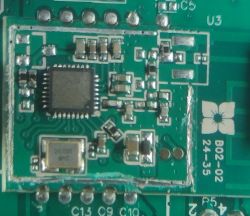Welcome,
I would like an answer to the question about the possibility of connecting Shelly 2.5 to the central switch of the roller shutters. My roller shutter installation is based on Bister model RCS4E controllers. In each box at the roller shutter under the switch sits such a controller. In addition, I have a group switch for 4 roller shutters in the living room and a group switch for all the roller shutters. As time has gone on, I have started to think about automation at least on a central level, but I have my doubts as to whether this can be done. Attached is a photo showing what one of the group switches looks like. There are 3 wires coming out of the box and each is live as if L1, L2, L3. When L1 and L2 are connected, the roller shutters close, and when L1 and L3 are connected, the roller shutters stop and open when pressed again. Is it possible to connect the Shelly 2.5 controller to this? I would add that there is a neutral wire in the box upstairs if it would be needed to close the circuit. Is it possible to arrange this in this box or do I need to combine in the switchboard and I do not want to do this myself.
 .
.
I would like an answer to the question about the possibility of connecting Shelly 2.5 to the central switch of the roller shutters. My roller shutter installation is based on Bister model RCS4E controllers. In each box at the roller shutter under the switch sits such a controller. In addition, I have a group switch for 4 roller shutters in the living room and a group switch for all the roller shutters. As time has gone on, I have started to think about automation at least on a central level, but I have my doubts as to whether this can be done. Attached is a photo showing what one of the group switches looks like. There are 3 wires coming out of the box and each is live as if L1, L2, L3. When L1 and L2 are connected, the roller shutters close, and when L1 and L3 are connected, the roller shutters stop and open when pressed again. Is it possible to connect the Shelly 2.5 controller to this? I would add that there is a neutral wire in the box upstairs if it would be needed to close the circuit. Is it possible to arrange this in this box or do I need to combine in the switchboard and I do not want to do this myself.
 .
.






